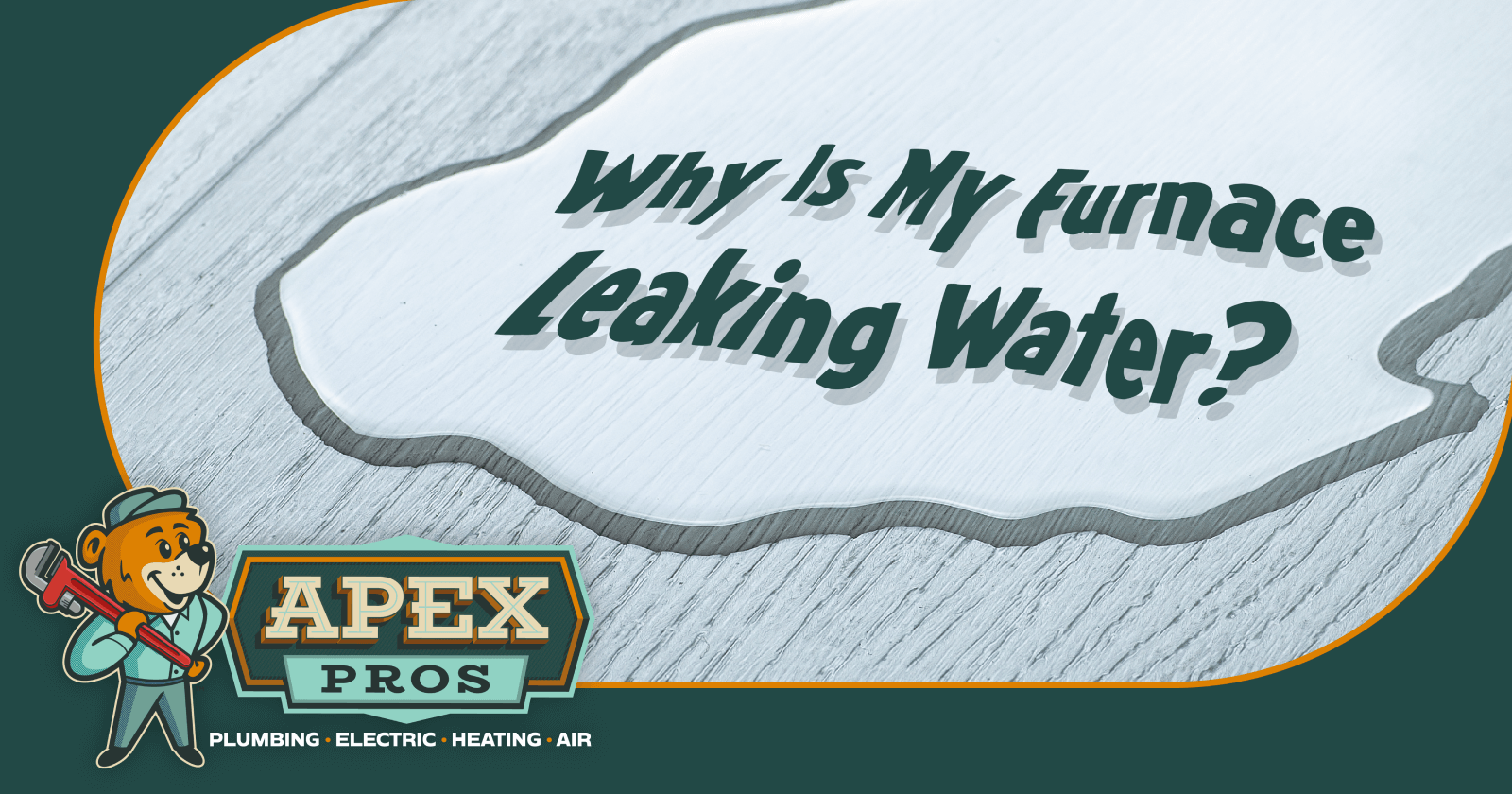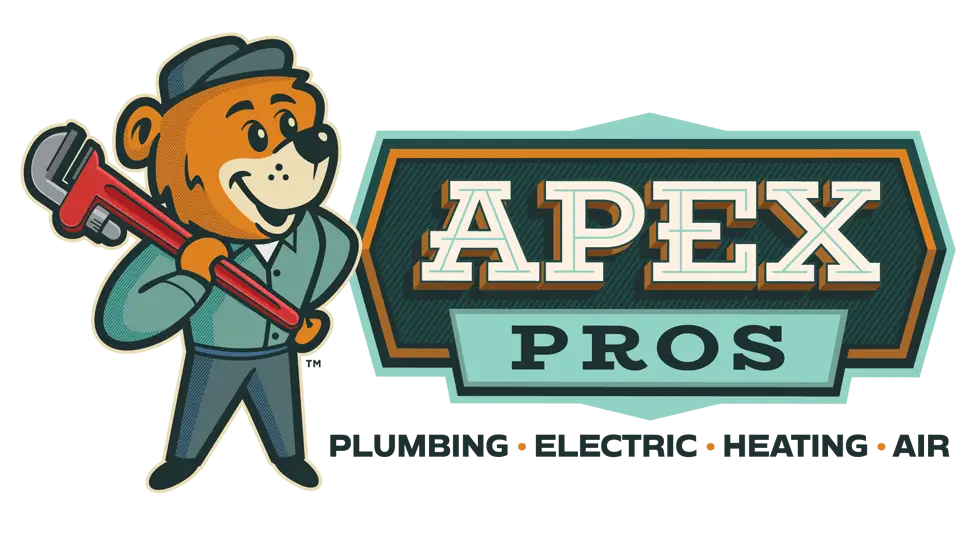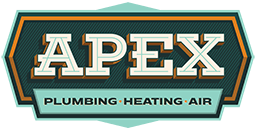
Seeing your furnace leaking water isn’t a reason to panic, but you want to act quickly. It’s a sign of a problem that needs to be fixed. The issue is less common with conventional heaters. High-efficiency furnaces have a secondary heat exchanger that extracts more heat and creates condensation, which normally drains away. We’ll look at the common causes of furnace leaks and ways to take care of them.
Common Causes of Water Leaks in Furnaces
If water has puddled on the floor near your furnace, it could cause property damage. Whether it triggers mold growth or damages your heater, flooring, or furnishings, repairs can be expensive. To avoid further trouble, first you need to identify the culprit:
- Clogged Drain Hose: Dirt and debris can clog the hose that’s connected to your furnace. Water then has nowhere to go and backs up the line.
- Damaged Drain Line: Water may leak if the drain hose becomes disconnected. You may also see water leakage if the line has a hole or crack.
- Failed Condensate Pump: This pump typically lasts up to five years. It often doesn’t work as well as it ages; a malfunctioning device can cause water to back up.
- Clogged Condensate Trap: A high-efficiency furnace may or may not have a condensate trap, which can get clogged and overflow.
- Clogged Air Filter: A clogged filter can force your heating system to work harder and produce more condensation. It can also cause the evaporator coil to freeze and drip water (if your furnace is combined with an air conditioner).
- Blocked Air Return: If a return vent is blocked, the system can produce more condensation. It may also be overworked, causing parts to break and leak.
The problem isn’t limited to high-efficiency heating units. Conventional furnaces can also leak water. A leak can come from the built-in humidifier, a cracked drain pan, or your air conditioner. Condensation from a frozen evaporator coil may appear to leak from the furnace, or the problem may not be with your HVAC system. It may be a plumbing leak if a water pipe is located near the furnace.
Condensate Drain Line Problems and What to Do
A clogged condensate drain line doesn’t always require a professional. You can try mixing hot water and vinegar in equal parts to flush the line. It may take several attempts to clear the blockage. Another option is to use a thin brush to physically remove debris.
Call a furnace repair technician if you find a cracked pipe or suspect other leak sources or heater problems. However, a clogged drain line can be avoided. Tubing should be cleaned by a professional once a year during your heating maintenance inspection and tune-up.
Issues with the Condensate Pump or Trap
Condensate pump failure can occur due to a blockage, kinked tubing, or lack of electrical power. To find any power issues, check that the circuit breaker and main switch are on and that the safety switch hasn’t triggered. Call a professional if there’s a problem with the wiring or another electrical component, or if the intake pipe, tubing, or check valve is obstructed or damaged.
High-Efficiency Furnace: Secondary Heat Exchanger Leaks
A heat exchanger separates harmful gases from the air. It allows heat produced from combustion to pass through metal surfaces. Air is blown through the system via the air handler and absorbs the heat before moving through the ductwork.
The secondary heat exchanger in a high-efficiency unit extracts heat from exhaust gases. This process causes the gases to cool. Water vapor condenses, which releases more heat. A condensing or non-condensing (traditional) furnace can leak water if it has a cracked heat exchanger; primary heat exchangers are closer to the flames, so the stress makes them more vulnerable to damage.
The only solution for a damaged heat exchanger is to replace it, which may require replacing the entire furnace due to the cost and complexity of the repair.
Signs of a furnace heat exchanger issue include the following:
- Cracks
- Corrosion
- Burning or metallic odors
- Soot buildup
- Discoloration around your furnace
Humidifier or Filter-Related Leak Sources
A whole-house humidifier is an effective moisture control solution, but it can be the source of a furnace leak. Issues that can leave water pooling on the floor include a clogged humidifier pad, a loose plumbing connection, or a clogged or cracked drain tube. Even tiny cracks and pinhole-sized punctures can cause leaks.
If the pipe is damaged, it’s best to have an HVAC professional repair or replace it.
Dirty or wet filters can be replaced without a technician. However, if there’s excess condensation over a period of time or a coil is frozen, call a contractor to fix your furnace water leak and check for any other possible damage to your heater. Addressing it promptly can avoid paying for more costly repairs or a furnace replacement.
What to Check First Before Calling a Pro
Don’t ignore water pooling near your heater. But before calling your local furnace service professional, turn off the system at the thermostat and breaker box. Next, you’ll want to check the following:
- Type of Furnace You Have: If you have a high-efficiency furnace, you’ll see a secondary heat exchanger and white plastic exhaust pipe. Conventional units have a metal exhaust pipe and are more common in older homes.
- How Much Water There Is: Using towels or a sponge, clean up the water (a wet-dry vac may be needed if there’s a lot of it) to prevent mold growth. If the area is still damp, use a fan to dry the area more thoroughly.
- A Dirty Air Filter: A clogged filter can cause your furnace to malfunction and leak. Changing the filter can resolve the issue and improve indoor air quality.
- Signs of Furnace Trouble: Call a professional if the furnace cabinet has rust streaks (the heat exchanger or control board may also be corroded), the unit makes strange sounds when running (water may be building up internally), or it keeps shutting down or tripping breakers (electrical components may be wet).
- An AC Leak: If your furnace leaks water while the AC is running, check for a frozen coil or an issue with the drain line or condensate pump.
- Musty Odor From Vents: This can mean moisture has gotten into your ductwork and caused mold to grow there.
Tools and Safe DIY Fixes You Can Do Yourself
Here are some DIY tips to address simple furnace leak causes and avoid furnace repair:
- Clean the Drain Pipe: Disconnect the pipe from the floor drain. Blowing air through it can clear out any blockages. You can also use a brush or vinegar and water, as mentioned earlier.
- Clear the Drain: A shop vac is effective at clearing the drain. If you don’t have one or can’t easily rent or borrow it, contact a professional.
- Inspect the Drain: Check the condensate drain regularly and clean it with a water and bleach mixture.
- Change Your Furnace Filter: Air filters should be changed regularly to ensure proper airflow and system efficiency.
- Maintain Proper Humidity Levels: Install a dehumidifier if your home has high moisture levels. It can help prevent condensation and water leaks.
- Schedule Regular Maintenance: Your furnace should be inspected professionally at least once a year for potential issues to address.
When It’s Time to Call an HVAC Technician
Call a furnace repair company if you don’t know where the leak is coming from, water damage has spread beyond the unit, or the inducer assembly (where condensation collects) or the condensate pump appears damaged. A technician can remove clogs and repair or replace broken or malfunctioning components using advanced tools and techniques.
Contact a professional immediately if the furnace isn’t heating your home, makes noise, releases gas odors, or otherwise shows signs of a problem.
At Apex Pros, we provide 5-star service and can quickly determine why your furnace is leaking. Our NATE-certified technicians quickly repair the issue and ensure your heating system is leak-free, safe, and efficient. Learn more about caring for your furnace in our Learning Center. Read our 5 Star Reviews to see what we can do for you! For fast and professional furnace repair in Dayton, Columbus, and other communities in Central Ohio, contact Apex Pros today!






